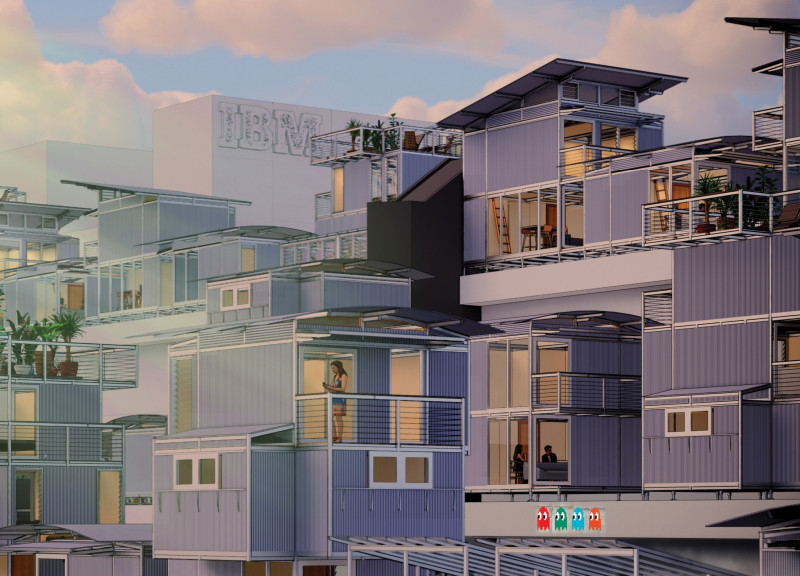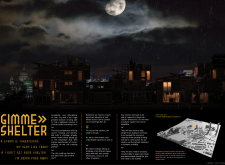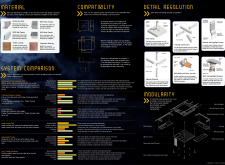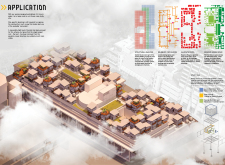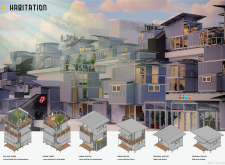5 key facts about this project
The design focuses on addressing the housing crisis in Central London by utilizing existing urban structures for new residential solutions. Located in Southbank, the former IBM Building was designed by Denys Lasdun. It features strong flat roofs which are well-suited for the proposed modular housing units. The concept aims to raise living spaces, directly responding to the issues of land availability and affordability in the city.
Modular Housing System
A modular housing system is central to the design. It can adapt to the unique dimensions and limits of the existing building, which is crucial in creating solutions that can meet the different needs of the community. The design ensures that the structures are lightweight to avoid overloading the original building, emphasizing safety and stability throughout the project.
Community Integration
Community engagement is a significant aspect of the plan, which includes both private and communal outdoor spaces to enhance interactions among residents. The design allocates areas for shared green spaces, promoting a feeling of belonging while accommodating a high density of living units. This approach recognizes the value of quality outdoor areas in urban living environments.
Utility Infrastructure
The proposal incorporates self-contained utility hubs to provide essential services for residents. This addition allows for the possibility of off-grid living, demonstrating a commitment to sustainability and practical solutions. Such infrastructure supports the daily needs of the community, making it easier for residents to manage their living conditions without heavy reliance on outside resources.
Natural Light and Ventilation
Another focus of the design is to maximize natural light and ventilation within the modular units. Large openings are used to enhance daylight and airflow, contributing to energy efficiency and improved living conditions. The careful integration of these features aligns with modern standards of sustainability while ensuring that the modular units remain functional and comfortable. By utilizing the existing structural elements of the IBM Building, the design creates living spaces that engage with the surrounding urban environment.


